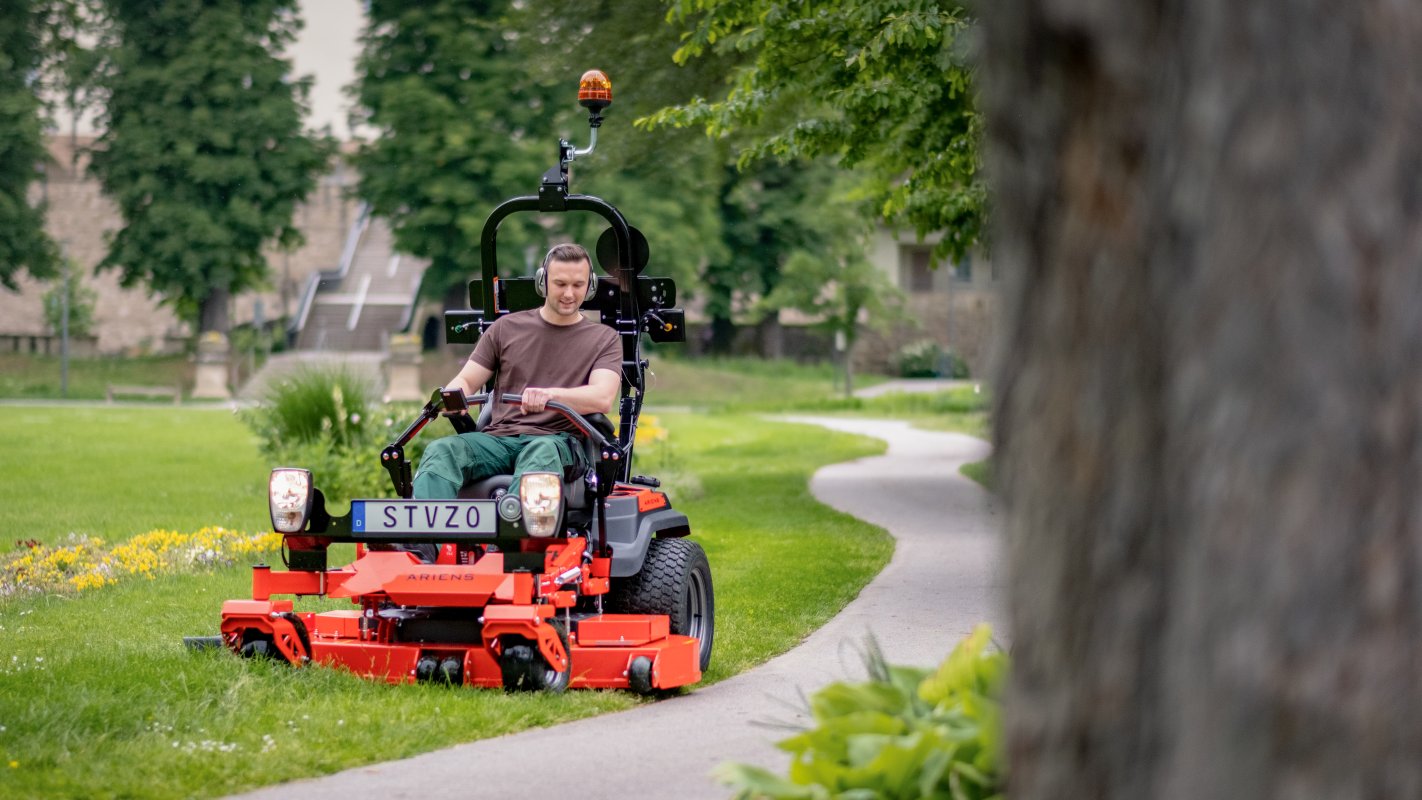The challenge was that the John Deere Zeroturns always had to be transported on a loaded to the job site because they did not comply with the German Road Traffic Licensing Regulations (StVZO) and you were in a legal grey area every time you changed roads.
So the solution was to make the zeroturns roadworthy. The lighting was the least of the problems; the only thing that had to be taken care of was that it did not get in the way during use, which could be regulated by a flip-up mechanism.
More difficult, however, was the positioning of the control unit for the lighting and the control unit for the so-called tank steering of the Zeroturns. According to the German Road Traffic Licensing Regulations (StVZO), these must be in the driver's field of vision. This is where our all-round talent and in-house technician Christian Flügel came into play. He developed the soft-touch panel, which can be operated with one finger due to its compact size and is also waterproof.
The operating unit sends impulses to the CPU (control unit), which transmits the signal to the consumers. Due to the digital signal transmission, cable diameters were saved. In addition, suitable sheet metal parts were developed for the John Deere Z997R, Z994R, WAM-1600T-III Z950R and F1500 lawn tractors in order to attach the lighting and number plates accordingly.
The TÜV approval and the sample certificate make it easy for the dealer to carry out the acceptance at the local TÜV office.
For France, John Deere France had a strong interest and therefore also arranged for a type approval here.
But matev would not be matev if it did not go one step further.
Sheet metal parts for mounting on the vehicle are usually not the problem, but the lighting with the so-called E-number, as well as the control unit and the cable sets.
So matev also brought a standard set with all the electrical components to attach the homologation kit to any vehicle.
In Europe, each country has its own road regulations and laws, but the ECE marking, which our lighting has, is accepted in every country in the EU. Through individual approval, roadworthiness can then also be guaranteed in other countries.
Side Fact In Germany, small vehicles must have the maximum speed marked in a white circle with a black border at the rear. In France, this black border is prohibited.









